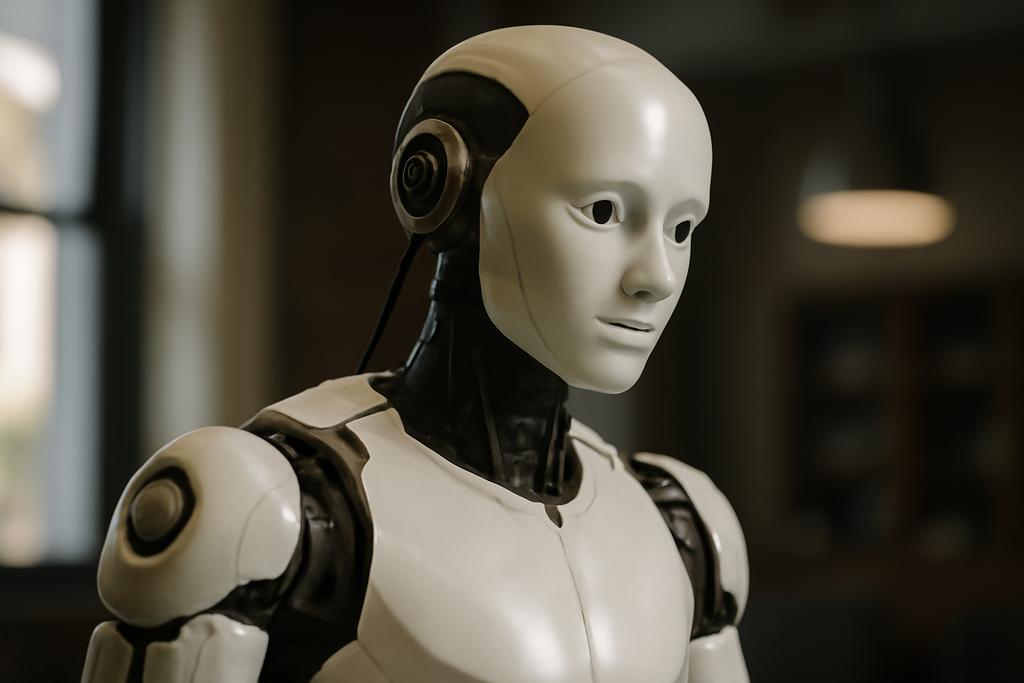The Robot Morphology Revolution
Forget broad strokes like “humanoid” or “animal-like.” A groundbreaking new framework from the University of Bremen, called METAMORPH, is poised to revolutionize how we understand and classify robot appearance. Led by researchers Rachel Ringe, Robin Nolte, Nima Zargham, Robert Porzel, and Rainer Malaka, this approach moves beyond simple categories to a much more detailed and nuanced analysis of robots’ visual features.
Beyond Simple Labels
Think about how we perceive robots. Often, the first impressions are deeply shaped by their appearance — a sleek, metallic robot might evoke a feeling of efficiency, while a cuddly, cartoonish one might seem more playful. Existing methods for classifying robots usually rely on broad, often subjective categories, limiting a deeper understanding of the relationship between visual design and human interaction. METAMORPH addresses this problem directly.
Building a Better Blueprint
The METAMORPH framework uses a technique called metamodeling. Imagine it as creating a master template by carefully examining numerous individual blueprints (in this case, images of 222 different robots from the IEEE Robots Guide). This isn’t just about checking boxes for features like “has arms” or “has legs.” METAMORPH delves into intricate details: the specific shapes of those limbs, the materials used in their construction, even the level of realism in features like eyes or a mouth.
The researchers didn’t just rely on existing classifications. They first conducted a focus group with roboticists to get input on the most relevant visual features. This gave them an initial framework to work with, ensuring a level of expert-informed understanding that grounded the metamodeling process. The focus group discussion provided key insights into the types of features that should be included and the appropriate level of detail for accurate characterization. This involved analyzing over 200 robot images and discussing various approaches to describing the spatial location of features.
A Multifaceted Taxonomy
METAMORPH goes beyond a simple list. It creates a hierarchical structure — a taxonomy — that classifies robot features and their relationships. This isn’t just a random assortment; it’s a carefully organized system that considers how individual parts work together to form a whole. The model categorizes robot features into “morphological subdivisions” (like “head,” “limb,” “body”), “descriptors” (describing things like shape, texture, and material), and “silhouettes” (the overall shape — anthropomorphic, zoomorphic, or something else).
The approach considers several types of morphological subdivisions. Connecting subdivisions link different parts of the robot, like a neck linking a head to the body. Terminal subdivisions are end points, like a hand or a wheel. Core subdivisions form the robot’s central structure, giving it basic stability. Descriptors give even more granularity, allowing researchers to classify the degree of realism in a robot’s face, for instance (from “hyperrealistic” to “abstract”).
Going Beyond the Visual
METAMORPH’s developers acknowledge the model’s limitations. For example, it doesn’t explicitly account for a robot’s capabilities. A robot might *look* like it can grasp objects, but its actual functionality may be different. This highlights the importance of keeping the model focused on appearance, while recognizing the need to integrate functional attributes through separate methods.
Another issue involves features that emerge from the *interaction* of multiple parts. For example, a robot’s “face” may be implied by the arrangement of features rather than explicitly represented through individual components like eyes and a mouth. While such nuances are challenging to incorporate into a strictly structured model, it’s a significant area for future refinement and improvement.
The Impact of METAMORPH
The implications of METAMORPH are far-reaching. This isn’t just a clever categorization scheme; it’s a tool that can drastically improve how we conduct research and design robots. By providing a standardized way to describe visual features, METAMORPH will greatly improve consistency across different studies, facilitating comparisons and identifying trends that might have been otherwise overlooked. This will allow researchers to explore the often subtle but critical influence of visual design on human interaction with robots, ultimately leading to better and more user-friendly robot design.
The creation of a dataset of robot morphological features, based on the METAMORPH model, will also benefit future studies. This dataset, coupled with visual distance metrics (like the Jaccard index and graph edit distance), will open up new avenues for quantitative analysis, allowing researchers to precisely measure the perceived similarity between different robot designs.
A Continuing Project
While METAMORPH is a significant advance, the researchers emphasize it’s a work in progress. The framework’s developers acknowledge limitations and areas that require further improvement. For instance, expanding the dataset to encompass a broader range of robots beyond those in the IEEE Robots Guide would enhance the model’s robustness and ensure better representation of the global diversity in robot designs.
Furthermore, additional validation by a wider group of participants, including those without robotics expertise, is needed to ensure that the visual classifications accurately reflect the general population’s perception of robot appearance. These are important steps in refining and expanding the potential of METAMORPH for future applications.
Looking Ahead
METAMORPH offers a fresh perspective on robot design and analysis. By moving beyond superficial categories and embracing a more nuanced, structured approach, it sets the stage for a future where robots are not only technologically advanced, but also deeply and thoughtfully designed for seamless human interaction. This research provides a critical foundation for future studies exploring the impact of robot appearance on human perception, interaction, and overall acceptance.










